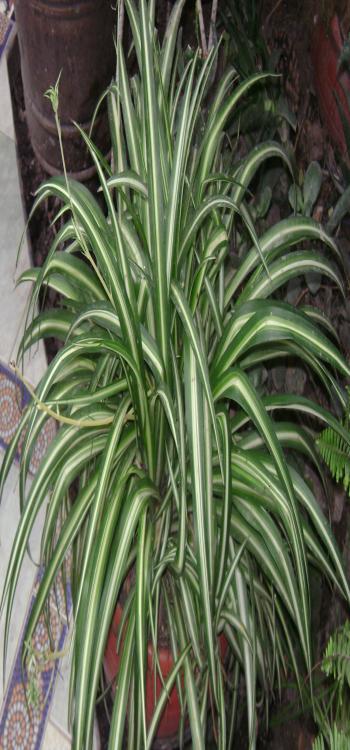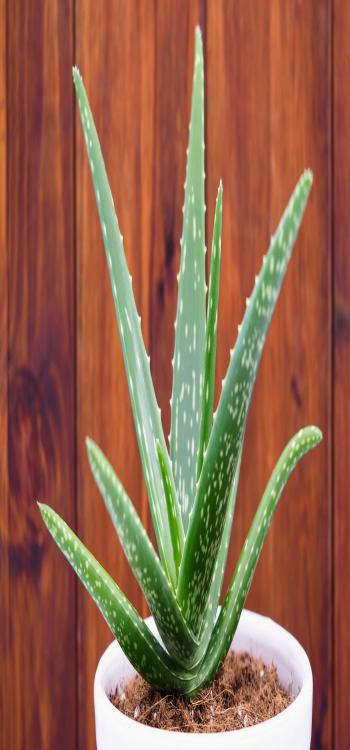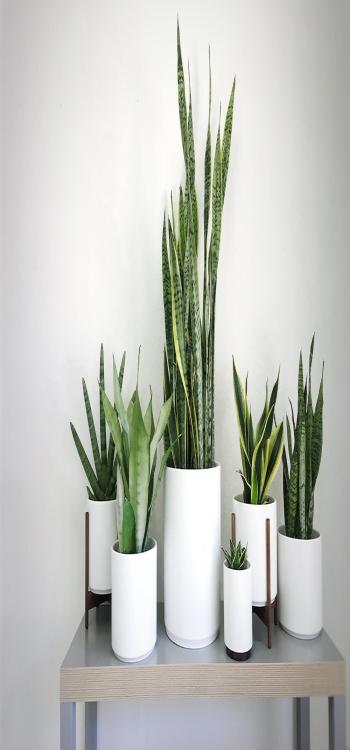Table of Contents
Quality Service Guarantee Or Painting Free

Get a rental agreement with doorstep delivery

Find the BEST deals and get unbelievable DISCOUNTS directly from builders!

5-Star rated painters, premium paints and services at the BEST PRICES!
Loved what you read? Share it with others!


Submit the Form to Unlock the Best Deals Today
Check Your Eligibility Instantly

Experience The NoBrokerHood Difference!
Set up a demo for the entire community
Top Indoor Air Purifying Plants: Clean Air for Healthier Living
Table of Contents
Plants are nature's silent gifts to humans, providing countless benefits. In today's urban world, many are detached from nature, residing in multistoried apartments. Thankfully, indoor air-purifying plants bridge this gap. They not only rejuvenate apartment interiors but also ensure the air we breathe is cleaner. Such plants can be a breath of fresh air after exhaustive days, making spaces like bedrooms, living rooms, or balconies feel fresher. For those in India, there's a curated list of the best indoor air-purifying plants that can effortlessly transform your home environment. Embrace these green companions for a healthier indoor atmosphere.
1. Spider Plant
This houseplant has arching green leaves and is perfect for indoor spaces. Best kept in hanging baskets in indirect light. Water moderately, allowing the soil to dry between waterings. It's also pet-friendly and easy to care for.

2. English Ivy
English Ivy drapes gracefully, evoking a sense of timeless elegance. Ensconce this Hedera helix in filtered sunlight, and maintain its soil with consistent moisture. It’s not just its appearance that charms many; it's also revered for its ability to filter formaldehyde from our breathing space.
Quality Service Guarantee Or Painting Free

Get a rental agreement with doorstep delivery

Find the BEST deals and get unbelievable DISCOUNTS directly from builders!

5-Star rated painters, premium paints and services at the BEST PRICES!

3. Lavender
In fields and gardens, the Lavender plant stands tall, flaunting its vibrant purple hues. This Lavandula thrives under the embrace of full sunlight. While it seeks hydration when its top inch of soil dries, its stress-relieving fragrance has endeared it to many a heart.

4. Aloe Vera
There's a soothing allure to the Aloe Vera, with its thick, fleshy leaves promising healing and calm. This desert gem craves a spot that gets plenty of sunlight. Though it’s a patient waiter between watering sessions, its reputation as a skin-soother is impervious to time.

5. Fern
Ferns evoke a prehistoric charm with their feathery fronds, reminding us of untouched forests. Preferring the shadows, they flourish in dimmer corners of your home. While they need consistent moisture, their ability to elevate any space with greenery remains unrivalled.

6. Baby Rubber Plant
Baby Rubber Plant stands out with its glossy green leaves that mirror nature's vibrancy. This plant thrives in indirect light, revealing its resilience. It waits patiently for water, and its unassuming beauty makes it a household favourite.

7. Bamboo Palm
Bamboo Plant is a symbol of grace and flexibility, with its tall stalks reaching skyward. It basks in moderate sunlight, painting a picture of serenity. Even though it appreciates fresh water, its stature as a beacon of luck and prosperity remains unshaken.

8. Chinese Evergreen
Chinese Evergreen captivates with its patterned foliage, a testament to nature's artistry. It asks for little, content in low-light corners. It sips water when parched, and its dual prowess of beauty and hardiness is cherished.

9. Lady Palm
Lady Palm elegantly showcases fan-shaped fronds that dance with every breeze. It thrives in both shaded and bright spaces. While its water needs are moderate, its stature as an aristocrat of the plant kingdom is undebatable.

10. Gerbera Daisy
Gerbera Daisy brightens spaces with its radiant blooms, mirroring the sun's joy. This floral gem desires a well-lit spot to flaunt its colours. It drinks when the soil feels dry, and its role as a mood-lifter is legendary.

11. Bromeliad
Bromeliad is a tropical delight, boasting vibrant hues and unique shapes. Craving bright, indirect light, it's a reminder of exotic rainforests. Its watering rhythm is infrequent, but its reputation as an eye-catcher is well-established.

12. Ficus
The timeless Ficus, with its woody stems and lush foliage, embodies nature's grandeur. It prefers a spot with bright, indirect light. Water when the topsoil feels dry and appreciates its enduring presence, a staple in many homes and offices.

13. Peace Lily
The Peace Lily, with its elegant white blooms, is a symbol of serenity and purity. It thrives in low to medium light and enjoys consistently moist soil. Besides its mesmerizing beauty, it's an excellent air purifier, marrying aesthetics with health.

14. Dragon Tree
The Dragon Tree, with its slender trunks and tufts of spiky leaves, is a dramatic addition to any space. Bright, indirect light is its sweet spot. Allow the soil to dry between waterings. Its sculptural beauty is matched by its ability to cleanse the air.

15. Snake Plant
The Snake Plant, characterized by its upright sword-like leaves, is a beacon of resilience. It's adaptable to various light conditions, from bright to low. Water sparingly, allowing the soil to dry. Renowned for its air-purifying properties, it's a guardian of both aesthetics and health.

The Importance of Indoor Air Purifying Plants
In our rapidly urbanizing world, the air we breathe is often taken for granted. Yet, with increasing pollution levels, especially within the confines of our homes, the quality of this air is deteriorating. This is where the unsung heroes of our living spaces – indoor air-purifying plants – come into play. Their importance cannot be stressed enough, and here's why:
1. Counteracting Pollutants: The modern home is filled with various pollutants, from volatile organic compounds (VOCs) emitted by furnishings and paint to the carbon dioxide we exhale. Plants such as the Spider Plant or Peace Lily can effectively absorb these harmful substances, converting them into oxygen and organic materials, thus rejuvenating the air.
2. Natural Humidifiers: Many indoor plants release water vapour in a process called transpiration. As a result, they act as natural humidifiers, increasing the moisture level in the air, which can be especially beneficial in dry indoor environments. This not only makes breathing easier but can also help in maintaining healthy skin and respiratory functions.
3. Enhancing Mental Well-being: It's well-documented that a connection to nature or even just the presence of greenery can reduce stress, increase feelings of contentment, and improve concentration. By purifying the air and releasing oxygen, plants can enhance cognitive function and overall mental well-being.
4. Cost-Effective Purification: While there are numerous air purifiers available in the market, they can be expensive and require regular maintenance. Indoor plants, on the other hand, offer a natural and cost-effective solution to air purification. With proper care, they can last for years, continuously detoxifying your living spaces.
5. Reducing the Risk of Illness: Poor indoor air quality has been linked to a slew of health problems, ranging from headaches and allergies to more severe conditions like asthma. By effectively removing toxins from the air, plants can reduce the risk of these ailments, ensuring a healthier living environment.
6. Sustainable and Eco-friendly: Plants are a sustainable solution. By integrating them into our homes, we're not only benefiting our immediate environment but also promoting a greener, eco-friendly lifestyle. They're a testament to the harmonious coexistence between humans and nature.
So there you go with the list of the best indoor plants you can have for air purification. The urban greyness makes your eyes tired, and the polluted air creates lots of health issues for you. As air pollution is rampant, having plants indoors can help you to stay close to nature and also take good care of your health. You can visit NoBroker Home Interiors or NoBoker by clicking below for home deals and save thousands on brokerage.
Frequently Asked Questions
A1. Most plants benefit from being repotted every 1-3 years. This is not just to replenish the nutrients in the soil but also to provide the plant with more space to grow. If a plant becomes root-bound or the soil looks exhausted, it's a good time to repot. However, the effectiveness of a plant in purifying air doesn't strictly depend on repotting but on its overall health. Ensure the plant is healthy, and receiving adequate light and nutrients, and it should continue to purify the air effectively.
A2. The Money Plant (Pothos) thrives in indirect light, needs water when the top inch of soil dries out, and prefers temperatures of 15-30°C. The Rubber Plant enjoys bright, indirect light, requires water once the top 1-2 inches of soil are dry, and flourishes in temperatures between 16-29°C.
A3. Indoor plants can help reduce indoor pollutants and improve overall air quality in homes. However, while they can provide some relief by removing certain contaminants, they cannot completely counteract the effects of outdoor pollution like Delhi's smog. Using air purifiers in combination with indoor plants and ensuring good ventilation can be more effective in managing indoor pollution.
A4. The frequency of watering largely depends on the type of plant, the specific microclimate in your home, and the local humidity levels. In areas with high humidity like coastal regions, plants may require less frequent watering. In drier areas, plants may need watering more often. Always check the moisture level of the soil before watering. As a general rule, it's better to slightly underwater than to be overwater. Overwatering can lead to root rot, which is a common issue with indoor plants.
A5. The Areca Palm efficiently removes airborne toxins and adds humidity to the environment, making it beneficial in air-conditioned spaces. The Snake Plant, unique for its nocturnal photosynthesis, effectively eliminates formaldehyde, benzene, and other pollutants. Both should be incorporated as components of a comprehensive indoor air quality strategy.
Loved what you read? Share it with others!
Most Viewed Articles

15 Safety Rules at Home for Kids
May 18, 2020
415874+ views

Plants That Need Only Water to Grow and How it is Different from Hydroponics
July 27, 2023
121042+ views

The Ten Most Effective Ways to Get Rid of those Buzzing Houseflies!
January 31, 2025
31703+ views

Kutcha House - Construction, Purpose and Significance!
January 15, 2025
31083+ views

Best Out-of-Waste Ideas to Decorate Your Home
January 31, 2025
25989+ views
Recent blogs in
5 Budget-Friendly Ways to Decorate Your Balcony
January 31, 2025 by NoBroker.com
How to Keep Your House Smelling Good All the Time?
January 31, 2025 by NoBroker.com
DIY Christmas Decoration: Tree Craft and More
January 31, 2025 by NoBroker.com
The Best Flowering Plants for Indian Winters 2025
January 31, 2025 by NoBroker.com
Lohri 2025: The Importance and Significance Of Lohri Festival
January 31, 2025 by NoBroker.com





Join the conversation!